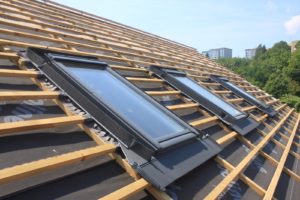Looking to add a touch of rustic charm or contemporary elegance to your home? A wooden roof lantern just might be the perfect architectural focal point. Let’s explore the warmth and character that wood lends to roof lantern design.
Types of Wood Used for Roof Lanterns
Wood roof lanterns showcase beautiful timber sourced from around the world. Popular options include:
Oak – A classic hardwood choice in the UK thanks to its strength, straight grain, and rich color ranging from tan to brown. Lends a traditional look.
Pine – Affordable softwood valued for its light weight, versatility, and soft texture. Its pale hue takes finishes well.
Redwood – Also called red cedar, this reddish-hued softwood has a straight, close grain and natural resistance to insects and moisture.
Mahogany – A prized hardwood imported from Africa and South America with a straight, fine grain and lustrous reddish-brown color.
Teak – Known for its natural golden brown to dark brown coloring and exceptional weather resistance. Makes very durable roof lanterns.
Walnut – A hardwood treasured for its deep, chocolate-brown hue and flowing grain pattern. Offers a luxurious look.
Advantages of Wooden Roof Lanterns
Beyond beauty, wood roof lanterns offer many benefits:
Warm, Inviting Atmosphere – The rich grains and textures of wood create a cozy, welcoming environment. Wood emits a natural warmth.
Acoustic Properties – Wood absorbs sound efficiently. Its acoustic performance helps reduce echo and ambient noise.
Sustainability – Many timber roof lantern options utilize renewable and responsibly harvested woods.
Strength – Hardwoods like oak have incredible structural integrity to support the roof lantern framework.
Customization – From contemporary to rustic, wood can be crafted into limitless roof lantern silhouettes and finishes.
Value – Real wood is an investment that will pay dividends in added home beauty and value for years to come.
Design Considerations for Wooden Roof Lanterns
To capitalize on the benefits of wood, keep these design factors in mind:
Structural Analysis – Have a structural engineer assess your roof to determine the required framework and supports a wooden lantern will need.
Wood Selection – Choose a wood that complements your climate and design aesthetic in terms of durability, tone, and grain.
Glazing – Look for insulated glass units and laminated safety glass to complement the warmth of the wood framing.
Roof Integration – Proper flashing and waterproofing are musts. Ensure adequate ventilation is maintained.
Coating – Protect the timber from UV rays and moisture with specially formulated translucent coatings or opaque paints.
Style – From contemporary triangular shapes to ornate Victorian profiles, wood roof lanterns offer endless design flexibility.

Maintenance of Wooden Roof Lanterns
Regular maintenance will help your wood roof lantern endure:
Cleaning – Sweep away debris monthly and use mild cleaners on glass and wood as needed to prevent buildup and staining.
Inspections – Check for damage, decay, leaks, and finish deterioration annually. Spot repairs quickly to prevent bigger issues.
Recoating – Reapply protective finish coats every 2-3 years as needed based on wear to restore water resistance.
Sealing – Inspect flashings, joints, and seals around the lantern to identify and reseal any gaps that could lead to leaks.
With the right care, a wood roof lantern will bring warmth, acoustics, sustainability, strength and custom elegance to your home for decades to come. Choose wood and let this beautiful natural material lend its unique charm to your living spaces.
Bask in the Warmth of Wood
With their rich grains and textural depth, wood roof lanterns are a mesmerizing architectural focal point. Choose hardwoods like oak for their resilient strength or softwoods like pine to meet budget needs. Tailor the design to complement your space, then care for the timber properly and your lantern will infuse your home with natural beauty for decades. Let wood bring its welcoming spirit in.
The Life and Lightness of Wood
From rustic cabins to modern farmhouses, wood roof lanterns feel right at home. Wood lends beauty, acoustics, sustainability, strength and customizability that no other material can match. Whether you favor a contemporary triangular silhouette or ornate Victorian contours, wood roof lanterns will fill your home with radiant light and cozy appeal.
Bring the Outdoors In
Wood roof lanterns marry exterior design with interior beauty and light. With responsible selection and care, wood’s character, charm and warmth will enrich your home for years. Let this natural material showcase its grains and hues to create an architectural focal point that feels both enduring and inviting. Wood brings the essence of outdoors in.
